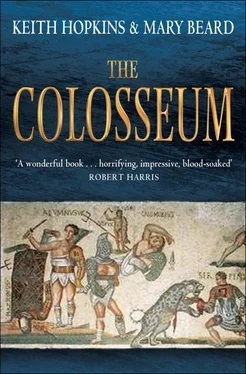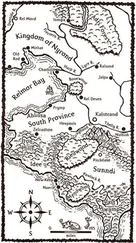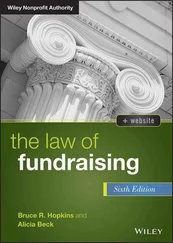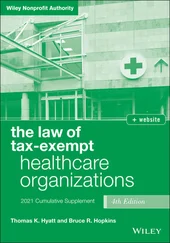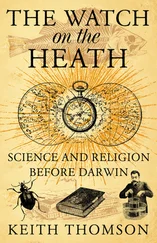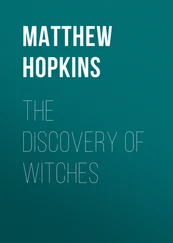Keith Hopkins - The Colosseum
Здесь есть возможность читать онлайн «Keith Hopkins - The Colosseum» весь текст электронной книги совершенно бесплатно (целиком полную версию без сокращений). В некоторых случаях можно слушать аудио, скачать через торрент в формате fb2 и присутствует краткое содержание. Город: London, Год выпуска: 2011, ISBN: 2011, Издательство: Profile Books, Жанр: История, на английском языке. Описание произведения, (предисловие) а так же отзывы посетителей доступны на портале библиотеки ЛибКат.
- Название:The Colosseum
- Автор:
- Издательство:Profile Books
- Жанр:
- Год:2011
- Город:London
- ISBN:9781846684708
- Рейтинг книги:3 / 5. Голосов: 1
-
Избранное:Добавить в избранное
- Отзывы:
-
Ваша оценка:
- 60
- 1
- 2
- 3
- 4
- 5
The Colosseum: краткое содержание, описание и аннотация
Предлагаем к чтению аннотацию, описание, краткое содержание или предисловие (зависит от того, что написал сам автор книги «The Colosseum»). Если вы не нашли необходимую информацию о книге — напишите в комментариях, мы постараемся отыскать её.
The Colosseum — читать онлайн бесплатно полную книгу (весь текст) целиком
Ниже представлен текст книги, разбитый по страницам. Система сохранения места последней прочитанной страницы, позволяет с удобством читать онлайн бесплатно книгу «The Colosseum», без необходимости каждый раз заново искать на чём Вы остановились. Поставьте закладку, и сможете в любой момент перейти на страницу, на которой закончили чтение.
Интервал:
Закладка:
All aspects of procuring animals for the Colosseum will be discussed by R. Wilson in Animals for the Arena: the Roman wild beast trade (Cambridge, forthcoming), the role of the military is discussed by C. Epplett, ‘The Capture of Animals by the Roman military’ in Greece and Rome , 48 (2001). The idea of the star rhinoceros is floated in Ville, La gladiature , p. 149. Pompey’s unfortunate experience with his elephants is recounted in Book 7 of Pliny’s Natural History . The story of the London hippo Obaysch is told by N. J. Root, ‘Victorian England’s Hippomania’, Natural History , 102 (1993). The letter of Ignatius to the Romans is translated in Volume 1 of the Loeb translation of The Apostolic Fathers . The phenomenon of martyrdom and ‘Martyr Acts’ has been widely discussed recently: for different approaches, see G. W. Bowersock, Martyrdom and Rome (Cambridge, 1995); D. Boyarin, ‘Martyrdom and the Making of Christianity and Judaism’, Journal of Early Christian Studies , 6 (1998); and K. Hopkins, A World Full of Gods (London, 1999), Chapter 3.
The Greek historian speculating on the Etruscan origin of gladiators is Nicolaus of Damascus, who is quoted in Athenaeus’ extraordinary compendium Deipnosophistae (Philosophers at Dinner ), Book 4, 153f–154a.
CHAPTER 5
The effects of the fire in 217 are discussed by L. Lancaster, ‘Reconstructing the Colosseum’s Restorations after the Fire of 217’, Journal of Roman Archaeology , 11 (1998), with some salutary remarks on the general difficulties of dating individual parts of the structure. The drawings of the stucco are fully illustrated in N. Dacos, ‘Les stucs du Colisée’, Latomus , 21 (1962); the graffito that is supposed to show the balustrading around the arena is in Connolly, Colosseum , p. 195. The classic study of the safety arrangements is A. Scobie, ‘Spectator Security and Comfort at Gladiatorial Games’, Nikephoros , 1 (1988).
The nineteenth-century debates about the substructures of the Colosseum and the question of naval battles are clearly explained by R. T. Ridley, The Eagle and the Spade: archaeology in Rome during the Napoleonic era (Cambridge, 1992), a full study of Roman archaeology during that period. There has been an enormous amount of recent work on the underground areas of the building, the drainage, foundations and the arrangements for the arena floor. The work of the German archaeologist H.-J. Beste has been crucial, though little of this is available in English. A flavour of his work can be found in his ‘The Construction and Phases of Development of the Wooden Arena Flooring of the Colosseum’, Journal of Roman Archaeology , 13 (2000); the same volume includes a review by R. Rea of recent archaeological work in and around the Colosseum (‘Studying the Valley of the Colosseum (1970–2000): achievements and prospects’). Other detailed studies include D. Mertens et al., ‘Il Colosseo. Lo studio degli “ipogei”’, and H.-J. Beste, ‘Neue Forschungsergebnisse zu einem Aufzugssystem im Untergeschoss des Kolosseums’, Mitteilungen des deutschen archaelogischen Instituts (Römische Abteilung) , 105 (1998) and 106 (1999).
The methods of amphitheatre design are analysed in minute detail by Wilson-Jones in ‘Designing Amphitheatres’ (and, more generally, in his Principles of Roman Architecture (New Haven & London, 2000)); building processes are discussed by R. Taylor in Roman Builders: a study in architectural process (Cambridge, 2003) – chapter 4 is specifically concerned with the Colosseum. Other reflections are offered by L. Haselberger in ‘Architectural Likenesses: models and plans of architecture in classical antiquity’, Journal of Roman Archaeology , 10 (1997). The story of Hadrian and Apollodorus is told in Book 69 of Dio’s History .
CHAPTER 6
A dazzling variety of post-antique uses of, and responses to, the Colosseum are collected in M. di Macco, Il Colosseo: funzione simbolica, storica, urbana (Rome, 1971). The Wonders of Rome is translated by F. M. Nichols (second edn, New York, 1986) and Master Gregory’s Wonders by J. L. Osborne (Toronto, 1987).
The best specialist studies of the Colosseum in late antiquity are not in English: see, for example, G. Ville, ‘Les Jeux de gladiateurs dans l’empire chrétien’, Mélanges de l’Ecole Française de Rome , 72 (1960); T. Wiedemann, ‘Das Ende der römischen Gladiatorenspiele’, Nikephoros, 8 (1995); and S. Orlandi, ‘Il Colosseo nel V secolo’, in W. V. Harris (ed.), The Transformations of urbs Roma in late antiquity (Journal of Roman Archaeology , Supplement, 33 (1999)). The inscription from Spello is found (untranslated) in the Corpus Inscriptionum Latinarum , Volume 11, 5265. For the late antique city of Rome more generally, see P. Llewellyn, Rome in the Dark Ages (London, 1971); B. Ward-Perkins, From Classical Antiquity to the Middle Ages: urban public building in northern and central Italy AD 300–850 (Oxford, 1984); and, taking the story up to the fourteenth century (with lavish illustrations), R. Krautheimer, Rome: profile of a city 312–1308 (Princeton, 1980).
The Renaissance architectural fascination with the Colosseum is briefly discussed, in the context of a clear discussion of the architectural orders, by J. Summerson, The Classical Language of Architecture (revised edition, London, 1980). Note also the detailed Italian study by F. Scoppola, ‘Il Colosseo come modello…’, in Frondose Arcate: il Colosseo prima dell’archeologia (Exhibition Catalogue, Palazzo Altemps, Rome, 2000). Good basic introductions to the architecture of the Renaissance can be found in the Pelican History of Art series: L. H. Heydenreich and P. Davies, Architecture in Italy, 1400–1500 (New Haven & London, 1996), and W. Lotz and D. Howard, Architecture in Italy, 1500–1600 (New Haven & London, 1995). The ‘borrowings’ from the Roman amphitheatre in the London Coliseum are described in F. Barker, The House that Stoll Built: the story of the Coliseum Theatre (London, 1957). Poggio’s lament is from his De Varietate Fortunae (1448; a modern text and edition by O. Merisalo was published in Helsinki, 1993); it was famously quoted in Chapter 71 of Edward Gibbon’s The Decline and Fall of the Roman Empire which includes a withering account of the Colosseum’s post-antique history, including such events as the fourteenth-century bullfight.
After more than a century, the definitively sceptical analysis of the evidence for martyrdom in the Colosseum (and one written from within the Catholic church) is still H. Delehaye, ‘L’Amphithéâtre flavien et ses environs dans les textes hagiographiques’, Analecta Bollandiana , 16 (1897). William Beckford’s barbs on the lazy abbots are originally from Letter 22 of his Dreams, Waking Thoughts and Incident , originally published in 1783, suppressed, republished as part of his Italy: with sketches of Spain and Portugal (London, 1834) and now available in an edition by R. J. Gemmett (Rutherford, NJ, 1972). The silver gilt image of St Peter is illustrated in Di Macco, Il Colosseo .
Lanciani’s reports are conveniently reprinted in A. L. Cubberley (ed.), Notes from Rome by Rodolfo Lanciani (London, 1988); the general archaeological atmosphere of Rome in the 1870s and 80s is captured by R. Lanciani, Ancient Rome in the Light of Recent Discoveries (Rome, 1888) – discussed by M. Beard, ‘Archaeology and Collecting in Late Nineteenth-Century Rome’, in Ancient Art to Post Impressionism: masterpieces from the Ny Carlsberg Glyptotek, Copenhagen (Exhibition Catalogue, Royal Academy of Arts, London, 2004). Hitler’s enthusiasm for the Colosseum and the designs for buildings based on it are documented in A. Scobie, Hitler’s State Architecture: the impact of classical antiquity (University Park, PA, & London, 1990). The history of Mussolini’s Via del Impero (now, dei Fori Imperiali) is vividly illustrated and documented in L. Barroero et al., Via dei Fori Imperiali. La zona archeologica di Roma: urbanistica, beni artistici e politica culturale (Venice, 1983).
Читать дальшеИнтервал:
Закладка:
Похожие книги на «The Colosseum»
Представляем Вашему вниманию похожие книги на «The Colosseum» списком для выбора. Мы отобрали схожую по названию и смыслу литературу в надежде предоставить читателям больше вариантов отыскать новые, интересные, ещё непрочитанные произведения.
Обсуждение, отзывы о книге «The Colosseum» и просто собственные мнения читателей. Оставьте ваши комментарии, напишите, что Вы думаете о произведении, его смысле или главных героях. Укажите что конкретно понравилось, а что нет, и почему Вы так считаете.
